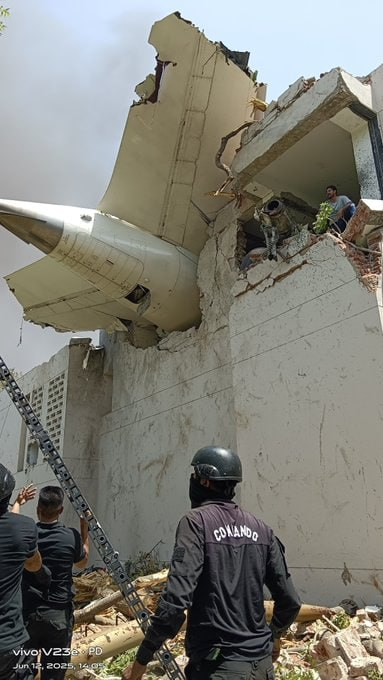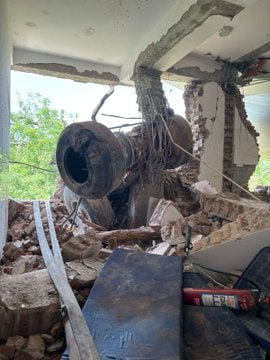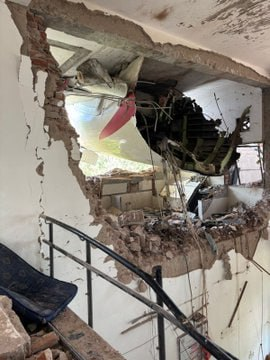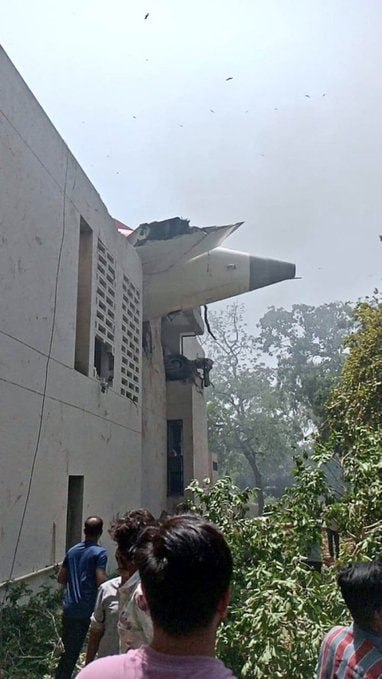Tragedy struck the Indian aviation sector when an Air India Boeing 787-8 Dreamliner, carrying 242 people—including 232 passengers and 10 crew members—crashed shortly after takeoff from Ahmedabad airport. The aircraft, operating as Flight AI171 and bound for London Gatwick, went down in a densely populated residential area, resulting in the deaths of nearly all on board and several on the ground, marking one of the gravest disasters in recent aviation history.

The Sequence of Events
The ill-fated flight departed Ahmedabad at 1:38 pm local time. Within minutes, the aircraft encountered severe difficulties. According to preliminary reports, the plane had reached an altitude of approximately 825 feet when it suddenly lost lift and began descending rapidly. The pilots managed to send a Mayday call, but communication was lost soon after. Eyewitnesses described a terrifying scene as the aircraft, trailing smoke, crashed into the BJ Medical College hostel, where medical students were reportedly having lunch.

Human Toll and Ground Impact
The crash resulted in catastrophic loss of life. Among the deceased was senior BJP leader and former Gujarat Chief Minister Vijay Rupani, whose presence on the flight was confirmed by officials. On the ground, the impact was equally devastating: the plane struck the medical college hostel, killing five medical students and injuring several others. Emergency services rushed to the scene, deploying over two dozen ambulances and cordoning off the area to facilitate rescue and recovery operations.
Despite the scale of the tragedy, at least one passenger—a British national—was reported to have survived, though the vast majority of those on board perished. The passenger manifest included 169 Indian nationals, 53 British nationals, one Canadian, and seven Portuguese citizens, highlighting the international dimensions of the disaster.

Possible Causes: What Went Wrong?
While the investigation is ongoing, early analyses by aviation experts point to a catastrophic loss of thrust or lift as the likely cause. Video footage and eyewitness accounts suggest several anomalies in the aircraft’s configuration during takeoff. Notably, the landing gear appeared to remain down longer than usual, and the wing flaps may not have been set correctly—both critical factors for generating sufficient lift during the climb phase. Experts have speculated about possible hydraulic failures, flap malfunctions, or even a double engine failure, potentially caused by a bird strike, though these remain unconfirmed.
Dr. Jason Knight, a senior lecturer in fluid mechanics, noted that the Dreamliner is designed to fly on a single engine, making a simultaneous failure of both engines—perhaps due to bird ingestion—a plausible but rare scenario. The aircraft’s black boxes, which record flight data and cockpit communications, will be crucial in determining the exact sequence of events and technical failures that led to the crash.
A Dark Day for Aviation
This disaster is particularly shocking given the Boeing 787-8 Dreamliner’s previously impeccable safety record. Since its introduction in 2011, the model had not been involved in a fatal crash until now. Aviation experts and officials have described the event as “very surprising,” emphasizing the rarity of such accidents during takeoff, a phase where modern aircraft are built with multiple redundancies to withstand technical failures.
National and International Response
The crash has prompted an outpouring of grief and condolences from Indian and international leaders. Prime Minister Narendra Modi expressed his deep sorrow and assured that all possible assistance was being provided to the affected families. Air India and its parent company, Tata Group, have pledged full support to emergency response teams and the families of the victims.
The Road Ahead: Investigation and Recovery
India’s Aircraft Accident Investigation Bureau has launched a comprehensive inquiry, with a focus on recovering and analyzing the aircraft’s black boxes. Boeing, the aircraft’s manufacturer, has stated it is working closely with Indian authorities to support the investigation and gather more information.
As the nation mourns, the tragedy serves as a stark reminder of the critical importance of aviation safety and the unpredictable nature of air travel, even in an era of advanced technology and rigorous standards. The findings of the ongoing investigation will be closely watched, not only by the families of those lost but by the global aviation community seeking answers and reassurance in the wake of this unprecedented disaster.

